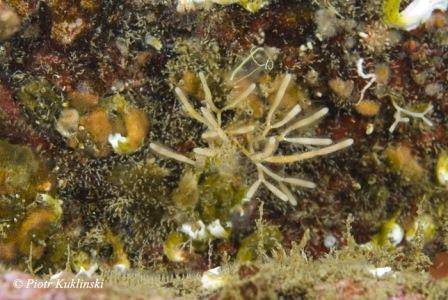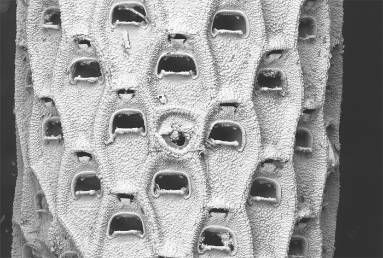This week, I and 11 other marine scientists will be heading off to the Norwegian fjords to look at the effects of climate change on marine life. This includes four members associated with the Museum who investigate bryozoans (also known as sea mats or moss animals).
We are aiming to photograph and collect samples of current marine Bryozoa to assess changes in the species composition of the Norwegian fauna in comparison with historical surveys from circa 1900-1920 and 1963 in the Bergen and Trondheim areas. The collections will be done by SCUBA diving in the cold clear waters of the Norwegian fjords.
We are investigating to see if the species biodiversity has changed in response to increases in sea water temperature. The team will also be surveying artifical structures to look at patterns of distribution of non-native and invasive bryozoan species in north European waters.
A colony of the bryozoan, Cellaria sinuosa growing on a rocky wall.
An electron microscope image showing the colony units.
The bryozoan research team consists of four members:
- Mary Spencer Jones: Bryozoa and Entoprocta curator at the Museum
- Dr Joanne Porter: Scientific Associate at the Museum/Heriot-Watt University Associate Professor
- Sally Rouse: Heriot-Watt/Scottish Association of Marine Sciences PhD student and former Natural History Museum Encyclopedia of Life Rubenstein Fellow
- Dr Piotr Kuklinski: Scientific Associate at the Museum/Institute of Oceanology Poland Associate Professor
The bryozoan research team: Mary Spencer Jones, Dr Joanne Porter, Sally Rouse and Dr Piotr Kuklinski.
The expedition kicks off on Saturday 28 June when the team join the research vessel MV Halton in Bergen and get all the equipment loaded on board. Joanne and I are making a visit to the bryozoan collection held at the Bergen Museum of Natural History prior to joining the cruise. Just time for a bit of final last minute packing before we head off on Thursday morning!
For more information on bryozoans, have a look at the Bryozoa of the British Isles Scratchpad website.
Mary Spencer Jones
















